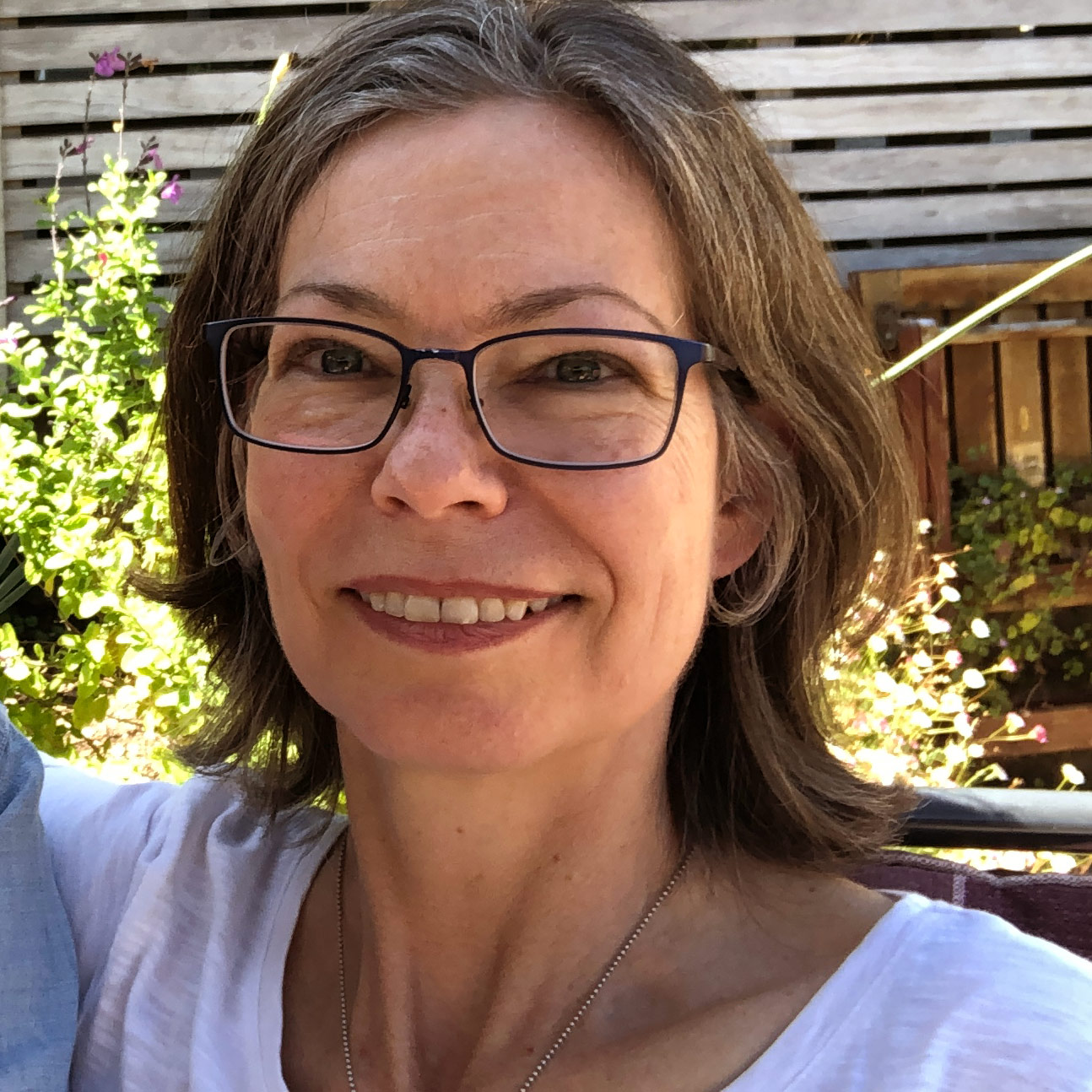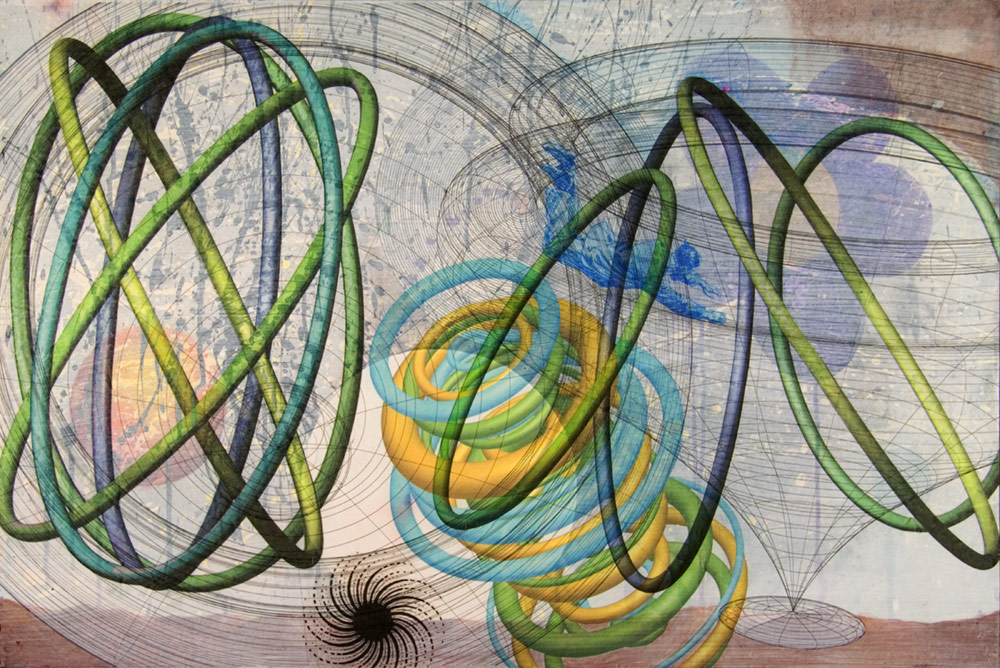
What do painting, philosophy, teaching and fiction writing have to do with user experience design? Quite a bit, apparently, when it all underpins website strategy and design.
Julia Stoops joined Gard as a user experience designer in 2015, after several years at the helm of her own web design firm, and a former career as a college teacher. Now she directs Gard’s web department — and she also maintains a professional studio art practice and has a published novel under her belt. We asked Julia how she fits it all together.
Julia Stoops joined Gard as a user experience designer in 2015, after several years at the helm of her own web design firm, and a former career as a college teacher. Now she directs Gard’s web department — and she also maintains a professional studio art practice and has a published novel under her belt. We asked Julia how she fits it all together.
What is your role at Gard?
I make websites that are beautiful, functional and easy to use. Not by myself, of course. I’m one part of a stellar team that includes developers, producers and project managers. And people on the client side as well. It’s a highly collaborative process. Officially, I direct Gard’s web and digital department.
User experience is the part I specialize in – helping clients create websites that are meaningful and intuitive for their target audiences. Making sure the user experience is always excellent. Because if it’s not, all your other goals miss the mark. I generally tend to view everything I interact with through the user experience lens: Is this simple, is it easy to use, can I do what I’m supposed to do? If I have to spend energy puzzling out how something works, that’s a sign someone wasn’t paying attention to UX during its design.
For websites, this UX work involves me in user research, information architecture, user experience design, user interface design and usability testing – all things I love.
When did you start here?
I came to Gard in 2015 after running my own agency called Blue Mouse Monkey. I built that company to specialize in websites for changemaker organizations – nonprofits and artists and the like. Before that, I was an Associate Professor at the Pacific Northwest College of Art, where I created some really cool courses in media studies, art and philosophy, and web animation.
What do you like about being a UX designer at Gard?

I like the fact that Gard’s clients are doing important work. They’re filling roles that are critical in our society. That really energizes me. For example, we work with health care organizations and government agencies – the kinds of organizations that all of us rely on for essential services and resources. So the work we do has substance. And personally, I love learning about our clients and their audiences, because each project immerses me in the details of how our world is put together and how it runs. You get an inside view, which I find fascinating.
What projects are you most proud of?
I’m proud that our team has done a really great job on some very big, very complex sites. There are so many challenges, so many moving parts. When you do it right, you make it look easy. But it’s actually a deeply engaging challenge, and when the finished site is validated by a focus group, it’s really satisfying.
What led you to become a website designer?
The behind-the-scenes aspect of how our culture is made is interesting to me. Even when I was a kid watching TV, I had no desire to be a presenter or star. Instead, I thought it would be fascinating to be a studio camera operator. In a very real sense, I’m still behind the scenes. It’s a place where I thrive.
I’m also a dyed-in-the-wool idealist. I’m attracted to aspirational organizations. When a government agency says they want their new website to make them as transparent as possible, I get excited by that goal. When a foundation wants to give seed money to tiny nonprofits that don’t have the resources to mount big grant-writing efforts, I’m excited by that goal.

What would you say is unique in your approach to website strategy and design?
My background in philosophy is really helpful. It informs my approach to web strategy and many aspects of projects. That surprises people, because they tend to think that philosophy is dull, or it’s all about old ideas. But actually, when you study philosophy, you learn to think and write clearly. Your thinking is judged by people who detect any hint of padding, any claims that are not 100% supported and arguments that don’t precisely follow logic all the way down to the nth degree. As a student, I was hopeless at symbolic logic but good at language-based logic. Learning the ins and outs of argumentative writing was the biggest practical takeaway from my entire college education. I feel like I use those skills every day.
But really everything in my background informs my user experience design process. My art practice keeps me connected to aesthetics. My teaching career taught me a lot about how different people understand things differently. Running a business taught me a lot about what’s important to clients. And for a while I even studied fiction writing, which taught me a lot about storytelling. All these experiences contribute to how I think about website design strategy and design.
If you weren’t doing this job, what would you be doing?
In my other life, I’m a visual artist, and I would definitely be spending more time in my studio. You could call my work “paintings,” but they’re really process-based mixed media pieces that combine paint and digitally generated collage. The hands-on, exploratory aspect is a great balance for all the computer work I do!
I also need to be useful in the world, and I’d likely be doing pro bono strategy and user experience design projects for causes that align with my values.

What else should we know about you?
I wrote a novel! (I am still surprised by this.) “Parts per Million” is an activist adventure story set in Portland. I’m originally from New Zealand and Portland is my adopted home. I loved capturing the flavor of this city, and I was thrilled when the manuscript was picked up by Portland publishing house Forest Avenue Press and published in 2018.
